 W
WPaula Angel was a Mexican-American woman executed for the murder of her lover. She was hanged from a cottonwood tree in Las Vegas, New Mexico, following a brief and somewhat abnormal legal process. She is the only woman to have been legally executed in New Mexico since its incorporation into the United States.
 W
WThe Arbuthnot and Ambrister incident occurred in 1818 during the First Seminole War. American General Andrew Jackson invaded Spanish Florida and captured and executed Alexander George Arbuthnot and Robert C. Ambrister, two British subjects charged with aiding Seminole and Creek Indians against the United States. Arbuthnot and Ambrister were tried and executed in modern Bay County, Florida, near what continues to be called Court Martial Lake. Jackson's actions triggered short-lived protests from the British and Spanish governments and an investigation by the United States Congress. Congressional reports found fault with Jackson's handling of the trial and execution of Arbuthnot and Ambrister, but Congress chose not to censure the popular general.
 W
WGeorge Andrew Atzerodt was a conspirator with John Wilkes Booth, in the assassination of US President Abraham Lincoln. He was assigned to assassinate Vice President Andrew Johnson, but lost his nerve and did not make any attempts. He was executed along with three other conspirators by hanging.
 W
WJereboam Orville Beauchamp was an American lawyer who murdered the Kentucky legislator Solomon P. Sharp; the crime is known as the Beauchamp–Sharp Tragedy. In 1821, Sharp had been accused in Bowling Green, Kentucky by Anna Cooke of fathering her illegitimate child; it was stillborn. Sharp denied paternity, and public opinion favored him. In 1824, Beauchamp married Cooke, who was seventeen years older than he. She asked him to kill Sharp to defend her honor.
 W
WAnn Bilansky was an American housewife convicted in 1859 of poisoning her husband with arsenic. She is the only woman in Minnesota to receive the death penalty and the first white person in the state to be executed by hanging.
 W
WJohn H. Brown was an American abolitionist leader. Brown felt that speeches, sermons, petitions, and moral persuasion were ineffective in the cause for abolishing slavery in the United States. An intensely religious man, Brown believed he was raised up by God to strike the death blow to American slavery. He felt that violence was necessary to end it.
 W
WAlexander Campbell was a tavern owner, who, with three other convicted Molly Maguires, was hanged for the murders of two mine operatives.
 W
WBoston Charley was a warrior in the Modoc War of 1872. He was reportedly given the "Boston" moniker by miners who felt he had a lighter complexion than the other warriors. In 1873 he had joined the group led by Kintpuash, and was later involved in an action that killed fourteen people at Tule Lake. On April 11, 1873 he was part of a group that killed Edward Canby. Charley did not personally kill Canby, but during the incident he killed a Dr. Thomas. On October 3, 1873, Boston Charley, Kintpuash, Schonchin John and Black Jim were executed for the murder of Edward Canby. He reportedly met his execution stoically, asking only for tobacco.
 W
WMarcellus Jerome Clarke was a Confederate captain who in 1864 became one of Kentucky's most famous guerrillas. He was rumored to be "Sue Mundy", a character publicized by George Prentice, editor of the Louisville Journal.
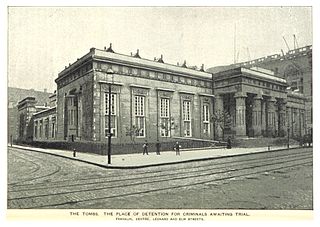 W
WEdward Coleman was the founder of the Forty Thieves, alleged to be the oldest criminal gang in New York City and the first Irish gang with an established leader. He became one of New York City's most notorious villains, for the murder of his wife and popular Five Points character known as "The Pretty Hot Corn Girl".
 W
WSamuel Cromwell was a sailor and petty officer aboard the brig USS Somers. Cromwell was feared by the young apprentices who made up the majority of the ship's crew, and was rumored to have served on a slaver at one time. These rumors lent credence to the idea that he would have been amenable to Philip Spencer's alleged plot to mutiny, kill the ship's officers and such of the crew as were not wanted and sail the Somers either as a pirate ship or a slaver.
 W
WDavid Owen Dodd, also known as David O. Dodd, was an Arkansas youth executed for spying in the American Civil War.
 W
WDaniel "Danny" Driscoll also known by his alias George Wallace was an American criminal and co-leader of the Whyos Gang with Danny Lyons. The two held joint control over the street gang following the death of Mike McGloin in 1883; however, both men were executed for separate murders only months apart from each other. They were the last powerful leaders of the organization and, following their downfall, the Whyos were eventually replaced by the Eastman and Five Points Gangs.
 W
WThomas C. Dula was a former Confederate soldier who was convicted of murdering Laura Foster. National publicity from newspapers such as The New York Times turned Dula's story into a folk legend. Although Laura was murdered in Wilkes County, North Carolina, Dula was tried, convicted, and hanged in Statesville. Considerable controversy surrounded the case. In subsequent years, a folk song was written, and many oral traditions were passed down, regarding the sensational occurrences surrounding Laura Foster's murder and Dula's subsequent execution. The Kingston Trio recorded a hit version of the murder ballad in 1958.
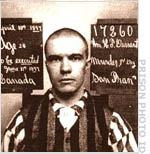 W
WWilliam Henry Theodore Durrant, known as "The Demon of the Belfry", was hanged for two murders committed at San Francisco's Emmanuel Baptist Church, where he was assistant superintendent of the Sunday School. He maintained his innocence of the crimes. His sister was Maud Allan.
 W
WGeorge Engel was a labor union activist executed after the Haymarket riot, along with Albert Parsons, August Spies, and Adolph Fischer.
 W
WJason Fairbanks was an alleged American murderer. Fairbanks came from a prominent family in Dedham, Massachusetts. He was the son of Ebenezer and Prudence Farrington Fairbanks and lived in the Fairbanks House, today the oldest wood-framed structure still standing in North America. He was left with a lame arm after a having smallpox as a child which was treated with mercury. His sixth cousin, once removed, was Vice President Charles Fairbanks. Jason's trial and attempted escape were national news in 1801.
 W
WChamp Ferguson was a notorious Confederate guerrilla during the American Civil War. He claimed to have killed over 100 Union soldiers and pro-Union civilians. He was arrested, tried, and executed for war crimes by the US government after the war.
 W
WAdolph Fischer was an anarchist and labor union activist tried and executed after the Haymarket Riot.
 W
WPedro Gilbert or Don Pedro Gibert was an early 19th-century pirate, who was one of the few remaining pirates continuing to raid shipping on the Atlantic coast.
 W
WCrawford Goldsby was a 19th-century American outlaw, known by the alias Cherokee Bill. Responsible for the murders of eight men, he and his gang terrorized the Indian Territory for over two years.
 W
WJohn Gordon was the last person executed by Rhode Island. His conviction and execution have been ascribed by researchers to anti-Roman Catholic and anti-Irish immigrant bias. As a result, he was posthumously pardoned in 2011.
 W
WCharles Julius Guiteau was an American writer and lawyer who assassinated United States President James A. Garfield on July 2, 1881. Guiteau falsely believed he had played a major role in Garfield's victory, for which he should be rewarded with a consulship. He was so offended by the Garfield administration's rejections of his applications to serve in Vienna or Paris that he decided to kill Garfield, and shot him at the Baltimore and Potomac Railroad Station in Washington, D.C. Garfield died two months later from infections related to the wounds. In January 1882, Guiteau was sentenced to death for the crime, and was hanged five months later. Executed two days short of the anniversary of his crime, Guiteau remains by far the longest-lived presidential assassin in U.S. history, and the only one put to death under federal law.
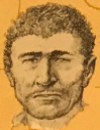 W
WMicajah "Big" Harpe, born Joshua Harper, and Wiley "Little" Harpe, born William Harper, were murderers, highwaymen and river pirates who operated in Tennessee, Kentucky, Illinois and Mississippi in the late 18th century. They are often considered the earliest documented serial killers in the United States history.
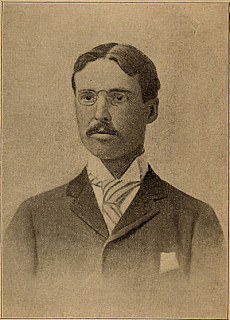 W
WCarlyle Harris was a medical student who was convicted and sentenced to death for the murder of his wife.
 W
WDavid Edgar Herold was an accomplice of John Wilkes Booth in the assassination of Abraham Lincoln on April 14, 1865. After the shooting, Herold accompanied Booth to the home of Dr. Samuel Mudd, who set Booth's injured leg. The two men then continued their escape through Maryland and into Virginia, and Herold remained with Booth until the authorities cornered them in a barn. Herold surrendered, but Booth was shot and died a few hours later. Herold was sentenced to death and hanged with three other conspirators at the Washington Arsenal, now known as Fort Lesley J. McNair.
 W
WAlbert W. Hicks, also known as Elias W. Hicks, William Johnson, John Hicks, and Pirate Hicks, was a triple murderer, and one of the last people executed for piracy in the United States. Cultural historian Rich Cohen places him as the first New York City legendary gangster figure, a bridge between the piracy of old and rise of a new 'gangster nation'.
 W
WHerman Webster Mudgett, better known as Dr. Henry Howard Holmes or H. H. Holmes, was an American serial killer. While he confessed to 27 murders, he was convicted and sentenced to death for only one murder, that of accomplice and business partner Benjamin Pitezel. Despite his confession of 27 murders after the Pitezel trial awaiting execution, it is speculated that Holmes may have killed as many as 200 people. Victims were killed in a mixed-use building which he owned in Chicago, located about 3 miles (5 km) west of the 1893 World's Fair: Columbian Exposition, supposedly called the World's Fair Hotel, though evidence suggests the hotel portion was never truly open for business.
 W
WWilliam Francis Kemmler was an American peddler, alcoholic, and murderer, who in 1890 became the first person in the world to be executed by electric chair. He was convicted of murdering Matilda "Tillie" Ziegler, his common-law wife, two years earlier. Although electrocution had previously been successfully used to kill a horse, Kemmler's execution did not go smoothly.
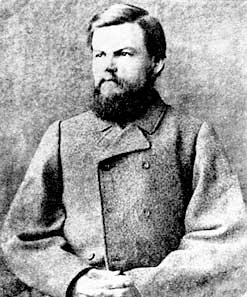 W
WRobert Cobb Kennedy was a Confederate operative who was hanged for his role in a failed plot to burn New York City during the American Civil War.
 W
WKintpuash, also known as Kientpaush and Captain Jack, was a chief of the Modoc tribe of California and Oregon. He led a band from the Klamath Reservation to return to their lands in California, where they resisted return. From 1872 to 1873, their small force made use of the lava beds, holding off more numerous United States Army forces for months in the Modoc War.
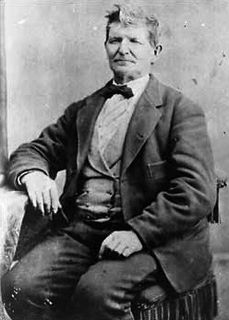 W
WJohn Doyle Lee was an American pioneer and prominent early member of the Latter Day Saint Movement in Utah. Lee was later convicted as a mass murderer for his complicity in the Mountain Meadows massacre, sentenced to death and was executed in 1877.
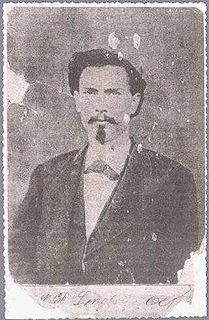 W
WWilliam Preston Longley, also known as Wild Bill Longley, was an American Old West outlaw and gunfighter noted for his ruthless nature, speed with a gun, quick temper, and unpredictable demeanor. He is considered to have been one of the deadliest gunfighters in the Old West.
 W
WDanny Lyons was, along with Danny Driscoll, the leader of the Whyos street gang during the 1870s and 1880s.
 W
WJohn McCaffary was the only person ever to be executed by the State of Wisconsin. He was executed by hanging for the murder of his wife.
 W
WWilliam Bruce Mumford was a North Carolinian native and resident of New Orleans, who was hanged for tearing down a United States flag during the American Civil War.
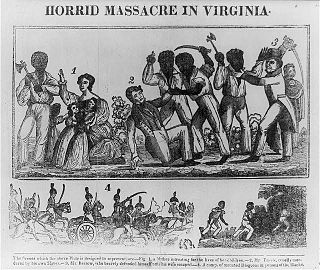 W
WNat Turner's Rebellion was a rebellion of black slaves that took place in Southampton County, Virginia, in August 1831, led by Nat Turner. The rebels killed between 55 and 65 people, at least 51 of whom were white. The rebellion was put down within a few days, but Turner survived in hiding for more than two months afterwards. The rebellion was effectively suppressed at Belmont Plantation on the morning of August 23, 1831.
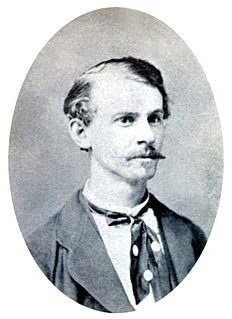 W
WAlbert Richard Parsons (1848–1887) was a pioneering American socialist and later anarchist newspaper editor, orator, and labor activist. As a teenager, he served in the military force of the Confederate States of America in Texas, during the American Civil War. After the war, he settled in Texas, and became an activist for the rights of former slaves, and later a Republican official during Reconstruction. With his wife Lucy Parsons, he then moved to Chicago in 1873 and worked in newspapers. There he became interested in the rights of workers. In 1884, he began editing The Alarm newspaper. Parsons was one of four Chicago radical leaders controversially convicted of conspiracy and hanged following a bomb attack on police remembered as the Haymarket affair.
 W
WMartha M. Place was an American murderer and the first woman to die in the electric chair. She was executed on March 20, 1899, at Sing Sing Correctional Facility for the murder of her stepdaughter Ida Place.
 W
WLewis Thornton Powell, also known as Lewis Payne and Lewis Paine, was an American Confederate soldier who attempted to assassinate William Henry Seward as part of the Lincoln assassination plot. Wounded at the Battle of Gettysburg, he later served in Mosby's Rangers before working with the Confederate Secret Service in Maryland. John Wilkes Booth recruited him into a plot to kidnap Lincoln and turn the president over to the Confederacy, but then decided to assassinate Lincoln, Seward, and Vice President Andrew Johnson instead, and assigned Powell the task to kill Seward.
 W
WPatrick Eugene Joseph Prendergast was an Irish-born American newspaper distributor who assassinated Chicago Mayor Carter Harrison, Sr., fatally shooting the five-term mayor on October 28, 1893. Following two separate trials, in which the defense tried unsuccessfully to have him acquitted by reason of insanity, Prendergast was ultimately found guilty and sentenced to death for the assassination. He was executed by hanging on July 13, 1894, the only client of famed attorney Clarence Darrow to ever receive the death penalty.
 W
WJohn Edward H. Rulloff was an American doctor, lawyer, schoolmaster, photographer, inventor, carpet designer, phrenologist, and philologist, in addition to a career criminal and serial killer. This dichotomy was exemplified in the title of his 1871 biography, The Man of Two Lives. He was also known as "The Genius Killer".
 W
WFrances Stewart Silver was hanged in Morganton, Burke County, North Carolina for the axe murder of her husband Charles Silver. Frankie Silver, as Frances was known, is believed to have been the first white woman put to death in Burke County.
 W
WElisha Small was an American sailor who was sailing with the rank of Seaman. He had served on several kinds of ships, including a slaver, before joining the United States Navy.
 W
WPhilip Spencer, a midshipman aboard USS Somers, was executed for mutiny without a court-martial. He was the son of John C. Spencer, Secretary of War in U.S. President John Tyler's administration, and the grandson of Ambrose Spencer, a New York politician and lawyer.
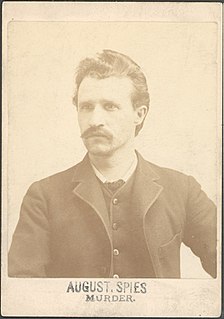 W
WAugust Vincent Theodore Spies was an American upholsterer, radical labor activist, and newspaper editor. Spies is remembered as one of the anarchists in Chicago who were found guilty of conspiracy to commit murder following a bomb attack on police in an event remembered as the Haymarket affair. Spies was one of four who were executed in the aftermath of this event.
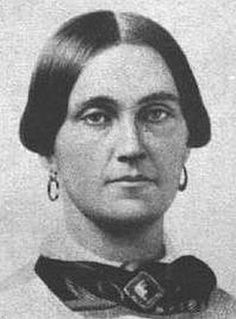 W
WMary Elizabeth Jenkins Surratt was an American boarding house owner in Washington D.C. in 1865 who was convicted of taking part in the conspiracy to assassinate U.S. President Abraham Lincoln. Sentenced to death, she was hanged and became the first woman executed by the US federal government. She maintained her innocence until her death, and the case against her was and is controversial. Surratt was the mother of John Surratt, who was later tried, but was not convicted of involvement in the assassination.
 W
WTiburcio Vasquez was a Californio bandido who was active in California from 1854 to 1874. The Vasquez Rocks, 40 miles (64 km) north of Los Angeles, were one of his many hideouts and are named after him.
 W
WDenmark Vesey was an African American leader in Charleston, South Carolina. He worked as a carpenter. In June 1822 he was accused and convicted of being the leader of "the rising," a potentially major slave revolt which was scheduled to take place in the city on July 14. He was executed on July 2.
 W
WJohn White Webster was an American professor of chemistry and geology at Harvard Medical College. In 1850, he was convicted of murder in the Parkman–Webster murder case and hanged.
 W
WWallace Wilkerson was an American stockman who was sentenced to death by the Territory of Utah for the murder of William Baxter. Wilkerson professed his innocence, but chose to die by firing squad over hanging or decapitation. The execution was botched; Wilkerson took up to 27 minutes to die because the firing squad missed his heart.
 W
WWilliam Orton Williams, called Orton Williams until he changed his name to Lawrence Williams Orton, was a Confederate officer who, after having been caught behind Union lines in a U.S. Army uniform, was executed as a spy.
 W
WHeinrich Hartmann Wirz, better known as Henry Wirz, was a Swiss-American officer of the Confederate Army during the American Civil War. Wirz was the commandant of the stockade of Camp Sumter, a Confederate prisoner-of-war camp near Andersonville, Georgia, where inhumane conditions led to a high mortality rate of Union detainees. After the war, Wirz was tried and executed for conspiracy and murder relating to his command of the camp.